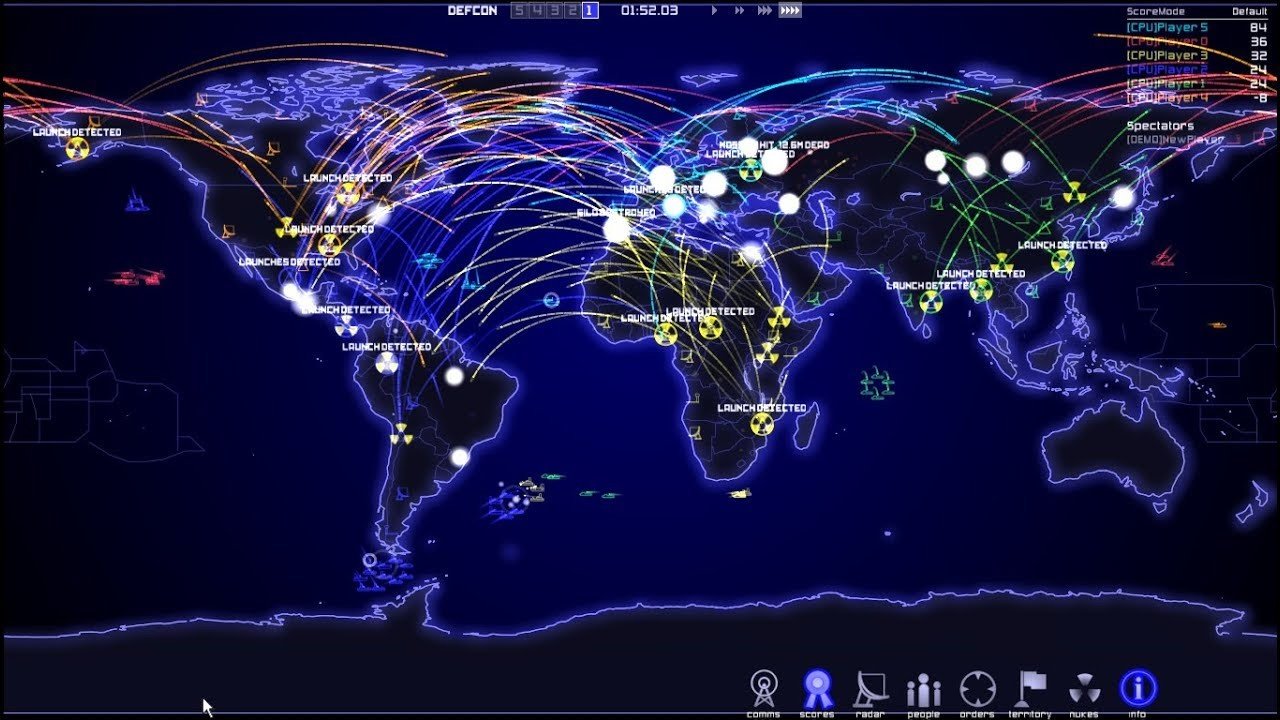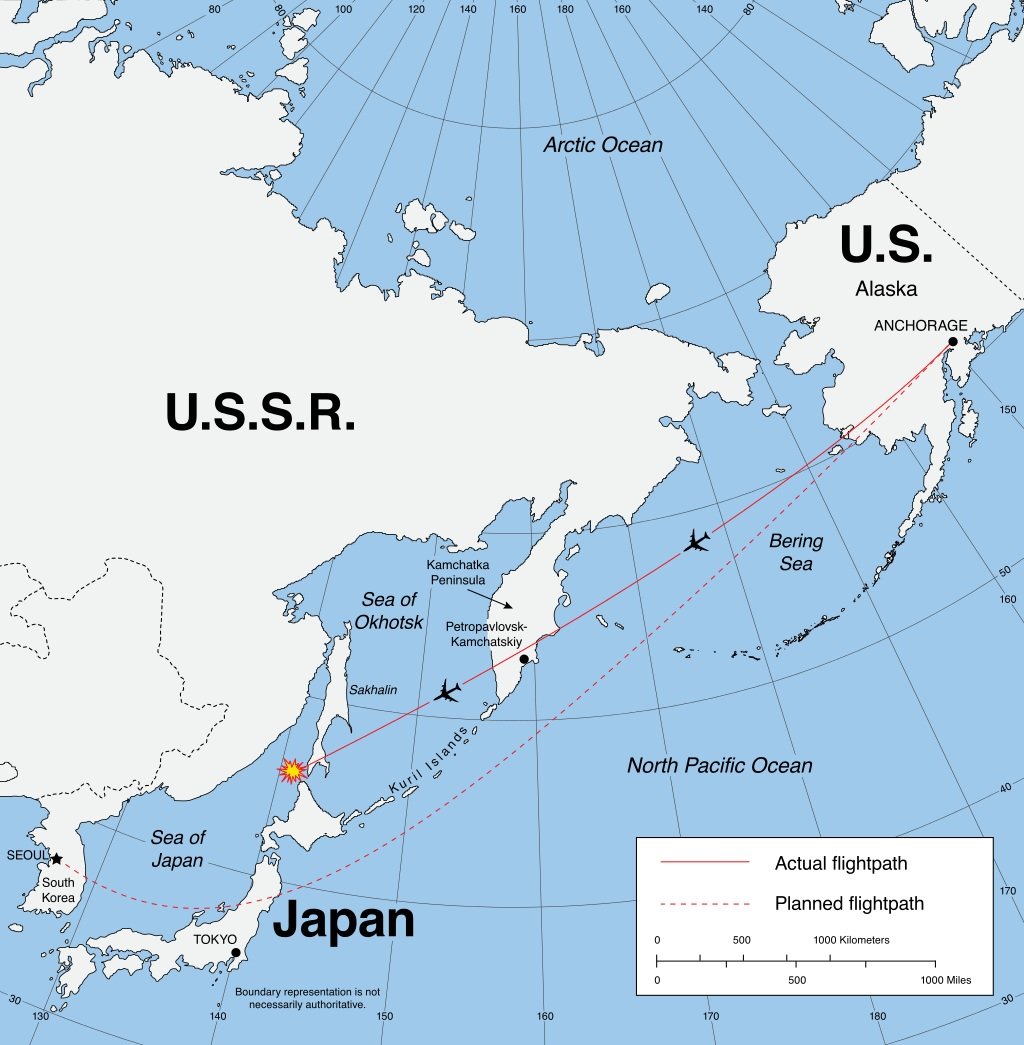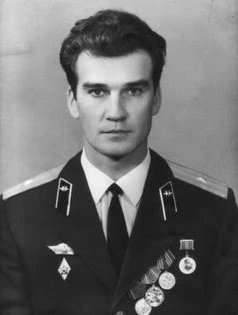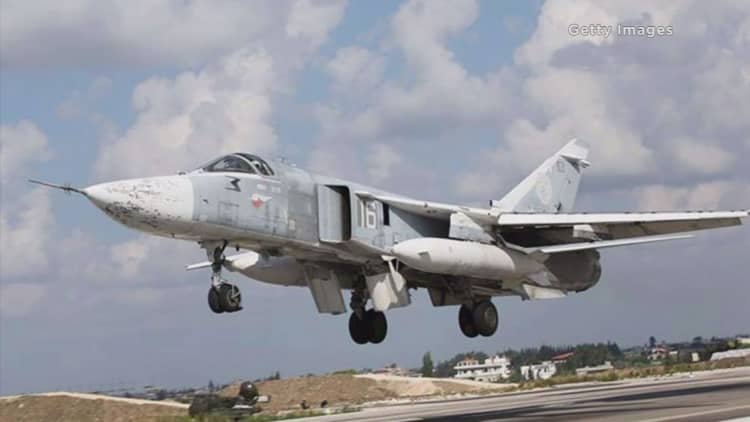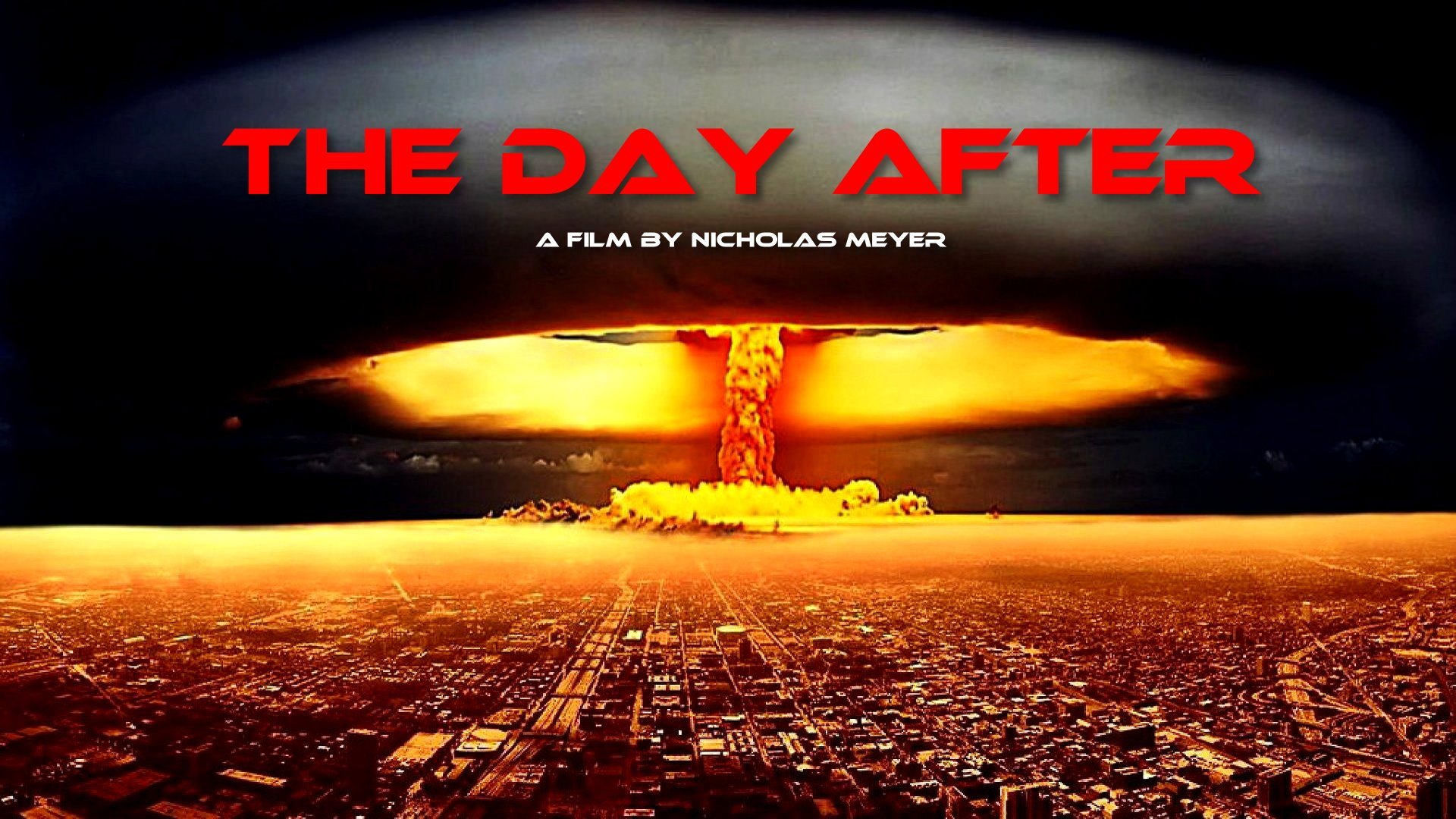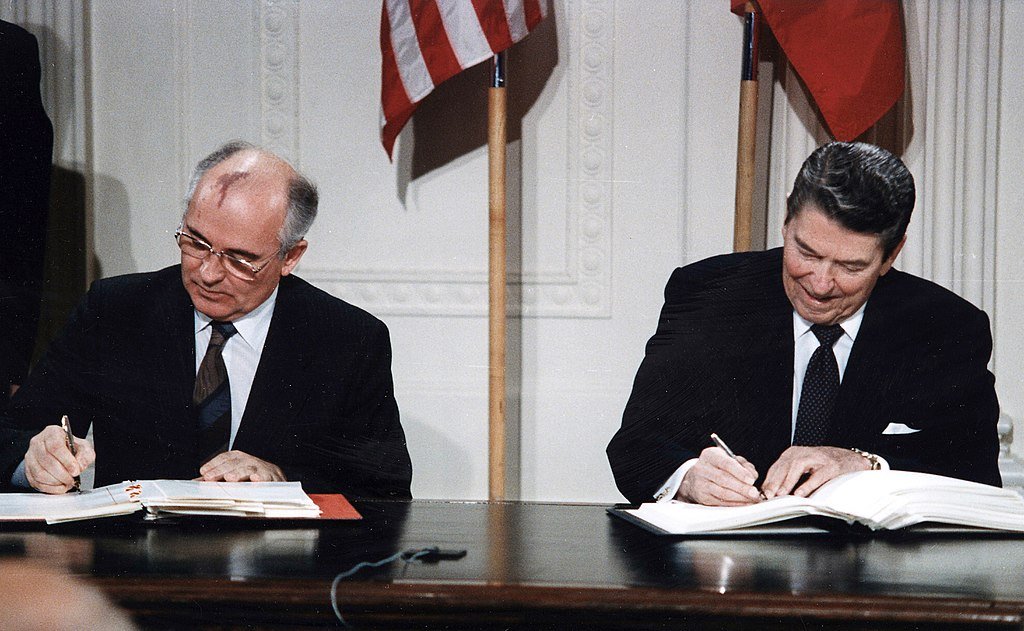1983 Oppenheimer’s nightmare
In the closing scene of Christopher Nolan’s masterpiece Oppenheimer, we witness our planet being consumed by nuclear fire. We understand then what kept Robert Oppenheimer awake every night after he successfully detonated the first fission bomb in 1945.
For the head of the Manhattan Project and many scientists, the A-bomb was about ending all wars, so humanity could focus on an abundant new source of energy.
In 1947, Oppenheimer and Albert Einstein, the 2 most important minds of the 20th century, reflected on their achievement. They have given mankind the key to understanding the laws of nature, and governments are using it for its destruction.
Right after the end of the costliest conflict in history, and on the eve of the Cold War, both scientists concluded that they could not trust any government with such power.
Robert Oppenheimer failed to prevent the development of the H bomb, 1000 times more powerful than Hiroshima. He was subjected to 10 years of public humiliation for his unsuccessful lobbying against it.
During the second half of the 20th century, both superpowers would clash on numerous occasions, sometimes bringing us very close to Oppenheimer's darkest vision, but never was the situation so dire as in 1983.
The MAD doctrine
The nuclear race between the 2 superpowers was rightly coined with the term “MAD” in 1962, Mutual Assured Destruction. Nuclear war was considered impossible because it would result in the vitrification of both belligerent and everybody else on the planet.
The younger generation seldom grasps the importance of the military in everybody’s life and its footprint on the world economy of the 60’s, 70’s and 80’s.
By 1983, every big city on both sides of the Iron Curtain were targeted by dozens of nuclear weapons, launched from airborne, submerged and ground-based silos.
In case of a launch, head of states had 25 minutes to react. This time was key in maintaining the idea that nuclear war could not be won because surprise was impossible. Any incoming weapons could be detected and an equally overwhelming retaliatory strike would follow.
MAD
A radical change in US policy towards the communist world in the early 80’s is going to trigger a chain of events that will bring the world close to full nuclear war.
The new Reagan administration decided to take a much stronger stance against the Soviet Union and immediately started a massive military reconstruction effort, investing billions of dollars to effectively end the MAD doctrine, launching de facto a new arms race in the hope of ruining the economy of the Warsaw Pact.
The USSR Politburo was extremely worried about the Strategic Defense Initiative; they saw this as an extremely aggressive move.
Known as Star Wars, this project included satellites capable of intercepting ballistic missiles.
The ongoing development of stealth technology and short-range nuclear missiles deployed in Europe was seen also as a major threat.
The Soviets were conscious that when fielded, both weapon systems would potentially give the US government the capability to nuke Soviet command centres with little or no warning. This would prevent them from retaliating with full force, transforming the Mutually Assured Destruction into a potentially winnable war.
Moreover, Reagan himself was known to despise the MAD doctrine and he believed tactical nuclear weapons should be used.
As a result, Soviet leaders were forced to invest billions in new weapons systems and they used their extensive intelligence network to try to anticipate NATO leaders' next moves.
1983
As early as February, Reagan’s aggressive policy started to increase significantly when an 80+ ships NATO Carrier Battle Group sailed North of the Kola Peninsula right outside Soviet territorial waters. For several weeks, they flew aggressively alongside Soviet airspace to test their defence.
In April, the US repeated the same operation with its Pacific Fleet, sailing close to the Soviet bases in the Kamchatka peninsula. US forces shadowed the Soviet navy and air defence with 3 aircraft carriers, 300 aircraft and 40 surface ships. Multiple Russian territorial overflights by US Navy pilots resulted in official complaints.
The Soviet Union being tested for the second time in less than 2 months felt cornered by Nato forces. Soviet Politburo started to fear that Reagan could be bold enough to start a war.
CINCPAC Exercise FLEETEX '83
Korean Airline Flight 007
In this state of heightened tension between the 2 governments, the Soviet military machine was put under tremendous strain. Many air defence officers were reprimanded during the previous months for not shooting down US Navy fighters flying over Soviet territory.
On September 1st, a ballistic missile test near the Kamchatka Island was being monitored by a US RC135 reconnaissance aircraft flying over international waters.
While the Russian long-range air defence radar covering the region was not operational, a civilian 747 heading to Seoul flew straight into Soviet airspace because of a navigational error. The Soviet Air Defence misidentified the civilian airliner due to poor visibility as the US RC135 aircraft.
Soviet Air Force pilots applied the normal procedure in this scenario; they shot it down.
Had the early warning radar been operational, it would have enabled an interception of the stray airliner roughly two hours earlier with plenty of time for proper identification as a civilian aircraft.
This tragedy cost 269 lives.
This event was a massive blow for the Soviets who poorly managed the international fallout. This situation ended up being exploited by Western powers to diminish the USSR's prestige.
747 flight path
Oko Malfunction
By September, the USSR was convinced of an imminent American attack. They knew that the US army was about to deploy in Europe the Pershing II nuclear missiles, built to strike most Russian main cities in less than 10 minutes. Since 1945, the USSR's main goal was to avoid a repetition of the German invasion and its 30 million dead at all cost.
Paranoia was at its peak when on September 26, right after midnight, the Russian early warning system detected one intercontinental ballistic missile being launched from the continental US.
The L-Colonel Stanislas Petrov was on duty; his responsibility was to warn his superior immediately and prepare a full-scale retaliation within minutes, following the official procedure.
As the Oko satellite system's reliability was uncertain and because the launch of a single missile did not make any military sense, he chose not to warn his superior until a radar detection of the missile was confirmed.
The OKO system detected 4 subsequent launches the same night, but again with no radar confirmation.
The head of the KGB confirmed in 1989 that, if the colonel had followed the normal procedure in this period of very high tension, Youri Andropov would have very likely given the order to launch immediately a full retaliatory strike.
Stanislas Petrov's quick decision-making prevented Oppenheimer's vision of armageddon from becoming a reality.
LtC Stanislav Petrov 1939-2017 the Man who saved the World
Ironically, it was later discovered that the OKO system worked well, it was just the victim of an illusion. Its sensors detected the sun's reflection on frozen clouds, the earth's rotation emulating the movement of a missile being launched….
Able Archer
The Soviet Union knew that to survive a nuclear war, they needed to strike first.
KBG agents were constantly monitoring key signs such as the unusual activity of key installation, mobilisation of technicians and nuclear unit movement.
On November 7, NATO initiated its biggest, most realistic war game of the Cold War: Able Archer.
The Soviets knew it was officially an exercise, but it could also be a cover to start a real war.
So they were on the lookout for any unusual signs.
From October, Moscow centre began to be flooded with alarming reports.
The US invasion of Grenada, a UK Commonwealth territory, triggered a burst of encrypted communication between the two allied countries and Russian intelligence feared it could be related to an initial briefing for an attack on the Rodina.
On the first day of the Able Archer exercise, 170 transport aircraft started to fly 19,000 US soldiers to Germany to their prepositioned army depots.
Russian agents sent alarming messages when they saw the US president, the UK prime minister and the German chancellor, all going into their respective command bunkers to participate in this exercise, something unheard of.
Soviet intelligence reported that NATO started to use unique, never-before-seen procedures as well as message formats more sophisticated than previous exercises, which possibly indicated the proximity of nuclear attack.
The realism of Able Archer was ringing all the Russian alarm bells. They responded in the only logical way; Russian nuclear forces started to mobilise.
Su 24 nuclear capable Tactical bomber
US satellites detected activities in Poland and East Germany air bases, where the 4th Air Army nuclear bombers were put on 30-minute alert with live nuclear ordnance. The CIA knew that this was only the tip of the iceberg; missile silos and nuclear submarines were also getting ready for a preemptive strike.
Lt. Gen. Leonard H. Perroots, second in command of the US Air Force in Europe was informed of the Russian activity; he suspected that it was in response to Able Archer. He wisely suggested that Nato should not react and wait until the end of the exercise to see if the behaviour was caused by it. If NATO had raised its alert level at this point, it might have triggered a Russian nuclear preemptive strike, so sure the Russians were of NATO's bellicose intention.
After 5 days of a tense face-off, Soviet fears of the attack ended, as the Able Archer exercise finished on November 11.
The day after
On November 20 1983, the highly anticipated movie “The Day After” was aired on NBC and watched by 100 million Americans.
The film postulates a fictional war between NATO and the Warsaw Pact that quickly degenerates into a full-scale nuclear war. Its very graphic and realistic depiction of the nuclear fallout on American society acted as an earthquake in US politics.
Ronald Reagan who saw it one month before, wrote in this memoir that this film was "very effective and left me greatly depressed". It changed his mind on the prevailing policy on nuclear war and had a direct impact on his relationship with soon-elected Premier Gorbachev, resulting in his signing the first treaty reducing nuclear weapons in 1987.
40 years later
On November 13 2023, the Creators of "WarGames" and "The Day After" received the Future Of Life Award 2023 for helping to prevent Nuclear War.
I would argue it beats any Oscar.
In this new period of tension where the MAD doctrine has been replaced by nuclear blackmail from a few regimes, one can only hope that the release of the movie Oppenheimer might bring some common sense into the heads of some leaders.
We now live in a world in which the horrors of World War 2 are now distant memories, but people are still highly influenced by effective storytelling and compelling visual effects.
Thank you, Mister Nolan.
Go watch this movie!!
To quote Sting Let's hope that everyone still loves their children too..


